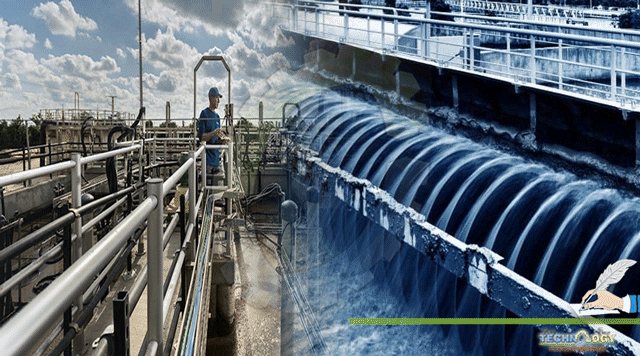Concept of zero energy wastewater treatment system will not only help industrial sector but also the environment. In Pakistan 8% wastewater can be treated in open ponds and lagoons.

A report says, only 1% of total wastewater is being treated in Pakistan because most of the plants are not working. Industrial and municipal wastewater is directly begin dumped into rivers without proper treatment because it energy extensive process. US uses its 1 to 2% energy (70 to 85 billion kWh/year) in wastewater treatment which is closer to total electricity production(94.5 billion kWh/year) of Pakistan.
Even if we are using the state of art technologies in WWTP electricity consumption ranges b/w 20 to 40 kWh and old tech goes to 85 kWh / PE-year (PE: population equivalent). Recently a study has reported that electricity demand in wastewater will increase by 20 % in next 10 to 15 years.
There are two technologies being used in this zero energy idea. one of them is ECC (electrocoagulation cell) full developed and has been implemented worldwide and other is microbial fuel cell which is in its earlier stages (lab to pilot scale).
What is microbial fuel cell?
Microbial fuel cells (MFCs) are one of the emerging anaerobic technologies which not only provides good quality treatment in terms of high organic removal, but also generates bio-electricity. The process involves oxidation of organic matter to produce electrons, protons and carbon-dioxide. Generally, a dual-chamber MFC is made up of two compartments, an anode and a cathode, which are divided by a (proton exchange membrane) PEM. The setup requires no external energy input. It can operate at low temperatures and provide high organic removal efficiency in terms of COD. Settling of wastewater in the anode compartment can also provide effective turbidity removal
Max output voltage and current that have been achieved is 110 V and 0.7 A respectively in cubic meter volume of brewery wastewater by Bruce. E logan.

What is Electrocoagulation cell (ECC)?
Electrocoagulation has several similarities with chemical coagulation method, but also significantly different due to side reactions at the anode and cathode. Chemical coagulation requires an addition of a chemical coagulant, but electrocoagulation does not require the input of any chemical coagulant. Whereas in the case of electrocoagulation, the coagulant is introduced from the anode. The dissolution of the metal takes places at the anode which produces metal ion that act as a coagulant. And hydrogen gas is produced on the cathode.
Zero energy idea
We went ahead and decided to couple these technologies at National university of science and technologies (NUST) Pakistan. As you can see below in pictorial view. Our basic idea was treating municipal or de-sizing wastewater from textile industry in MFC and producing electricity. Then using this electricity to treat dye wastewater from textile industry in ECC. At institute of environmental engineering and sciences (IESE, NUST) in the supervision of Dr. Zeeshan Sheikh they have successfully operated and achieved significant results at lab scale.
 Zero energy idea to become implementable at industrial scale, When?
Zero energy idea to become implementable at industrial scale, When?
We have to wait and contribute in the development of this technology. Like every country did while bringing the solar cell tech from more than 100$/watt to less than 1$/watt. Research and technological made it it possible just from 1979 to 2016 CE .This tech is far from industrial implementation because its capital cost is high & has not achieved any Significant result to become implementable in industrial zone. Its long way to go but this technology has potential to revolutionize the industrial wastewater treatment sector.
NUST as an institute of technolgies keeps on working on zero energy idea like Idea of zero energy homes at NUST
 Zero energy idea to become implementable at industrial scale, When?
Zero energy idea to become implementable at industrial scale, When?